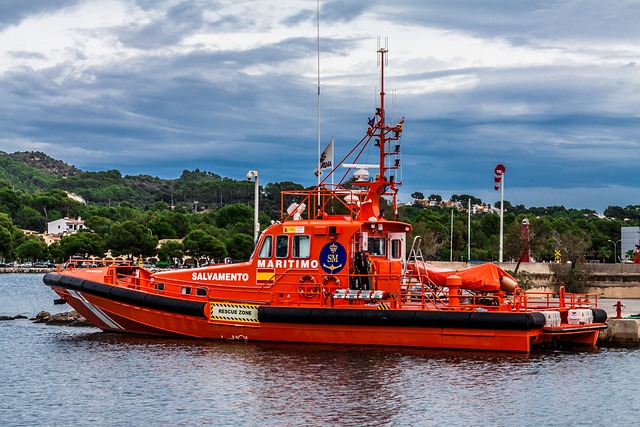Introduction:
Lifeboat services are an essential aspect of maritime safety, providing quick-response solutions to emergencies at sea. Whether it’s assisting stranded vessels, rescuing individuals in peril, or supporting maritime operations, lifeboat services are crucial for minimizing risk in the maritime environment. This blog explores the importance of lifeboat service, the types of lifeboats used, and the key safety measures that these services provide to enhance the safety of those at sea.
Why Lifeboat Services Are Essential
Lifeboat services play a critical role in maritime safety, acting as a first line of defense during emergencies. These services are typically on standby at ports, offshore installations, and along coastlines to offer assistance during maritime accidents, extreme weather, or unforeseen technical failures. Without them, crew members, passengers, and goods would face greater risks in open waters, particularly during hazardous conditions.
Types of Lifeboats Used in Lifeboat Services
Different types of lifeboats serve various purposes, depending on the situation and specific requirements:
- Open Lifeboats: These are traditional lifeboats without a cover and are often manually powered, primarily used in situations where simplicity and speed are essential.
- Closed Lifeboats: These lifeboats offer additional protection against harsh weather and waves. They are commonly used for offshore operations where environmental protection is critical.
- Free-Fall Lifeboats: Designed to drop quickly from a height, these boats allow for rapid deployment, making them especially useful for vessels and oil rigs requiring fast evacuation.
Safety Features in Lifeboat Services
Lifeboat services incorporate various safety features that ensure effective rescues and survival support:
- Emergency Communication Systems: Lifeboats are equipped with radios, emergency position-indicating beacons (EPIRBs), and satellite navigation for reliable communication and location tracking.
- Survival Kits: Most lifeboats contain emergency supplies, including food, water, first-aid kits, and thermal blankets to support survivors until rescue.
- Self-Righting Capability: Modern lifeboats are often designed to self-right if capsized, providing an additional level of safety during rough sea conditions.
How Lifeboat Services Operate
Lifeboat services operate through a coordinated response network involving coast guards, maritime authorities, and rescue organizations. Once a distress signal is received, the nearest lifeboat team is dispatched to the location. These teams are trained for quick-response scenarios and are equipped with navigational tools and high-speed vessels to reach the affected site rapidly. In extreme cases, helicopters may be deployed to assist with aerial support.
The Importance of Regular Lifeboat Drills
Regular lifeboat drills are essential for ensuring the safety and readiness of the crew in an emergency. These drills allow crew members to familiarize themselves with lifeboat deployment, evacuation procedures, and rescue protocols. It’s a preventive measure that ensures smooth operation and minimizes panic during actual emergencies.
Challenges Facing Lifeboat Services
Despite the essential services provided, lifeboat operations can face numerous challenges:
- Weather Conditions: Rough seas, high winds, and other harsh weather conditions can delay or complicate rescue efforts, placing additional demands on lifeboat operators.
- Technological Limitations: While modern lifeboats come with sophisticated safety features, they can still encounter technical issues, particularly in older vessels or under extreme weather conditions.
- Training Requirements: Lifeboat operators must undergo rigorous training, which can be time-consuming and expensive. Ensuring that personnel are skilled and able to handle emergencies is a continual focus for maritime organizations.
The Future of Lifeboat Services: Innovation and Technology
Advances in technology are transforming lifeboat services, making rescue operations faster, safer, and more efficient. Developments in autonomous vessels, GPS tracking, and improved weather forecasting are enhancing lifeboat capabilities. Additionally, remote-controlled lifeboats and drones for initial assessment are promising innovations that could reduce risks to human rescuers while ensuring prompt response.
Environmental Impact and Eco-Friendly Lifeboat Operations
As the world becomes more environmentally conscious, lifeboat services are also looking to reduce their environmental footprint. Innovations like electric-powered lifeboats and environmentally safe lubricants aim to minimize pollution and protect marine ecosystems. This move toward sustainable operations ensures that lifeboat services fulfill their role without harming the environment they work within.
Role in Offshore Installations
Lifeboat services are critical for offshore platforms, especially in the oil and gas sectors. These installations are often situated in remote locations, making immediate evacuation and rescue capabilities essential. Lifeboat teams stationed nearby provide constant support and rapid response in case of fire, explosion, or structural failure, thereby ensuring the safety of hundreds of offshore workers.
Improved Lifeboat Construction Materials
Lifeboat design has evolved over the years, with newer materials such as fiberglass and aluminum replacing older, heavier materials. These modern lifeboats are lightweight yet durable, capable of withstanding severe weather while being easy to maneuver. This advancement in construction enhances the safety and performance of lifeboat services in high-risk situations.
Public Awareness and Education Campaigns
Many lifeboat service organizations run public awareness campaigns to educate coastal communities and maritime workers on safety protocols. By increasing awareness of lifeboat services, these campaigns empower individuals to act quickly and responsibly in emergencies, ensuring that they understand how to use life-saving equipment correctly.
Conclusion
Lifeboat services are invaluable to maritime safety, providing a vital line of protection for those who work and travel at sea. With continuous advancements in technology and rigorous training standards, these services are equipped to respond effectively to emergencies, safeguard lives, and reduce risks in maritime operations. Whether supporting routine voyages or responding to large-scale maritime accidents, lifeboat services remain a cornerstone of the maritime industry’s commitment to safety and protection at sea.

